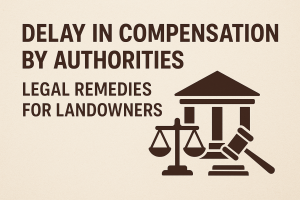1. Introduction
Taxation is often understood as a top-down process—legislatures and governments determine tax rates, while citizens comply. However, at the grassroots level, especially in rural India, taxation and revenue planning acquire a different meaning. Here, it is not just about compliance but about trust, participation, and fairness.
The Gram Sabha—the general assembly of all registered voters in a village—is constitutionally mandated to serve as the nucleus of local self-government. It is also the most direct democratic platform available for citizens to voice concerns, approve budgets, and monitor expenditure.
Integrating community consultation into revenue planning and taxation through Gram Sabhas can:
- Align local taxation with citizens’ economic capacity.
- Ensure transparency in resource allocation.
- Increase compliance by improving trust in the system.
- Strengthen fiscal decentralisation as envisioned by the 73rd Constitutional Amendment (1992).
2. Historical & Constitutional Background
2.1 Evolution of Local Self-Governance in India
- Pre-Independence: Village panchayats were informal, community-led institutions responsible for dispute resolution and basic revenue management.
- Post-Independence:
- Balwant Rai Mehta Committee (1957) recommended democratic decentralisation via the Panchayati Raj system.
- Ashok Mehta Committee (1978) stressed the importance of financial devolution to local bodies.
- 73rd Constitutional Amendment Act (1992) gave constitutional status to Panchayati Raj Institutions (PRIs).
2.2 Gram Sabha’s Legal Role
Under Article 243A, Gram Sabhas have the power to:
- Approve local plans and programmes.
- Oversee Gram Panchayat functioning.
- Be consulted in taxation and revenue-related matters.
2.3 Finance Commission’s Push for Local Fiscal Autonomy
The 15th Finance Commission (2021–26) recommended:
- ₹4.36 lakh crore for Rural & Urban Local Bodies.
- ₹2.36 lakh crore specifically for Rural Local Bodies (RLBs).
- Grants linked to performance and transparency, encouraging Gram Sabha involvement in financial planning.
3. Why Fair Taxation Needs Community Consultation
3.1 The Problem of Disconnected Revenue Planning
Without citizen participation:
- Local taxes may be regressive or excessive.
- Citizens perceive taxation as exploitative.
- Compliance drops, forcing over-reliance on grants.
3.2 Benefits of Gram Sabha-Led Tax Planning
| Factor | Without Consultation | With Gram Sabha Consultation |
| Revenue Needs vs. Capacity | Arbitrary taxes, mismatch with income | Tailored to local economic realities |
| Transparency & Trust | Suspicion, low compliance | Increased compliance & legitimacy |
| Equity | Local inequities overlooked | Tax exemptions/subsidies for vulnerable groups |
| Accountability | Misallocation of funds | Citizens monitor usage of collected taxes |
| Fiscal Health | Dependency on grants | Balanced mix of transfers + own revenues |
4. India’s Local Revenue Landscape
4.1 Sources of Local Revenue
- Central Transfers (Finance Commission grants).
- State Transfers.
- Own-Source Revenues (OSR): property tax, professional tax, user fees, trade license fees, cess.
- Borrowing (rare for GPs).
4.2 Data Snapshot (15th Finance Commission)
| Revenue Source | Amount (₹ Crore) | Share (%) |
| Central Grants (RLBs) | 2,36,000 | 73% |
| State Transfers (avg est.) | 40,000 | 12% |
| Own-Source Revenues (avg est.) | 20,000 | 6% |
| Local Taxes & Fees | 25,000 | 8% |
| Borrowings & Others | 5,000 | 1% |
| Total | 3,26,000 | 100% |
Chart Idea: Pie chart showing dominance of central grants (73%).
5. Gram Sabhas in Practice: Case Studies
5.1 Kerala – The Gold Standard
- Kerala’s People’s Plan Campaign (1996) institutionalised Gram Sabha participation.
- Funds devolved: 28% of state plan outlay directly to local bodies (~₹8,258 crore, 2023–25).
- Formula-based allocation: Non-discretionary, reducing political bias.
- Gram Sabhas approve budgets, select beneficiaries, and conduct social audits.
- Result: Higher compliance in local tax collection.
5.2 Karnataka – Decentralised but Patchy
- Gram Sabhas legally empowered but suffer from low attendance (avg. 20–25%).
- OSR collection remains <10% of GP budgets.
- Experiments with online disclosure portals show promise.
5.3 Maharashtra – Social Audits
- Strong in using Gram Sabhas for audit of MNREGA and welfare schemes.
- But revenue discussions often sidelined, leading to weak OSR mobilisation.
6. Data-Driven Benefits of Consultation
6.1 Improved Compliance
A CBPS study (2022) found that Gram Panchayats that held >3 Gram Sabha meetings/year reported:
- 25% higher property tax compliance.
- 15% increase in user fee collection.
6.2 Enhanced Equity
Where Gram Sabhas discuss taxation openly:
- Poor households often exempted or charged reduced rates.
- Wealthier commercial entities contribute more (progressivity).
7. Proposed Model: Community-Driven Revenue Planning
7.1 Consultation Framework
- Pre-Budget Consultations: Panchayat presents revenue needs to Gram Sabha.
- Tax Design Workshops: Citizens discuss feasible instruments (property tax slabs, user fees, cess).
- Approval Stage: Gram Sabha formally approves/rejects tax proposals.
- Transparency Mechanism: Quarterly disclosure of collection & expenditure.
- Social Audit: Citizens verify utilisation.
7.2 Suggested Tax Instruments for GPs
| Instrument | Features | Fairness Element |
| Property Tax | Progressive slabs, GIS-linked | Ability-to-pay based |
| User Fees | For water, sanitation, markets | Service-linked |
| Profession Tax | Capped by state ceilings | Equitable contribution |
| Local Cess | On quarrying, natural resources | Environmental justice |
Chart Idea: A flow diagram showing “Consultation → Approval → Implementation → Audit → Trust & Compliance.”
8. Challenges & Solutions
| Challenge | Impact | Proposed Solution |
| Low Gram Sabha attendance | Decisions taken by elites | Mandate minimum quorum + digital participation |
| Lack of technical capacity | Poor revenue estimates | Train local staff in revenue modelling |
| Political interference | Distorted allocations | Formula-based transfers + independent audits |
| Resistance to taxation | Revenue stagnation | Awareness campaigns on tax-service linkage |
9. International Lessons
- Brazil (Porto Alegre): Participatory Budgeting since 1989 → higher compliance, better services.
- South Africa: Municipal consultation mandated in Integrated Development Planning (IDP).
- Philippines: Barangays (village-level councils) conduct Barangay Assemblies for taxation discussions.
These models show that citizen participation directly correlates with higher tax fairness and compliance.
10. Conclusion: The Way Forward
For India’s 2.5 lakh Gram Panchayats, the next frontier in fiscal decentralisation is not just more funds, but fairer, community-approved revenue planning.
Key Takeaways:
- Gram Sabhas should be legally mandated to approve all local tax proposals.
- States must link Finance Commission grants with evidence of Gram Sabha consultations.
- Technology (apps, online portals) should complement physical meetings to broaden participation.
When citizens see their voice reflected in taxation, they move from tax resistance → tax compliance → tax ownership.
Thus, Gram Sabhas can transform taxation from a burden into a shared tool for development.



